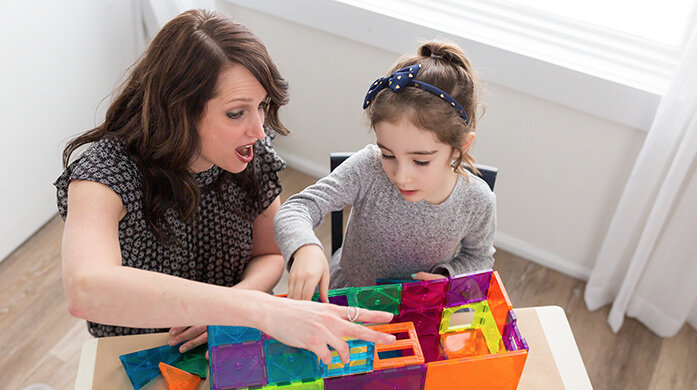
Expressive and Receptive Language Disorders
Difficulty using language (expressive) to communicate thoughts and ideas (e.g., asking questions, creating grammatically appropriate sentences, labeling objects) or difficulty understanding (receptive) language (e.g., following directions, answering questions, identifying vocabulary).
Articulation Disorder
Difficulty producing speech sounds, often leading to decreased speech intelligibility. Articulation errors may involve the omission, substitution, or alteration of specific sounds. An example of an articulation error includes "w" for "r" (i.e., "wabbit" for "rabbit"). An articulation disorder often involves errors that are produced past expected age.
Phonological Disorder
Involves patterns of sound errors. Examples of phonological errors include velar fronting (i.g., "tar" for "car"), stopping (e.g., "toup" for "soup"), or cluster reduction (e.g., "top" for "stop").
Childhood Apraxia of Speech (CAS)
Difficulty coordinating movements of the lips, tongue and/or jaw to produce sounds, syllables, and words. Children with CAS often know what they want to say, but have difficulty executing their message.
Sensory-Based Feeding Difficulties
Difficulty with taste, texture, sight, and/or smell of food. Children with sensory feeding difficulties may have a significantly limited variety of tastes and textures in their diets. Maladaptive behaviors around mealtimes may cause frustration for both the child and family.



